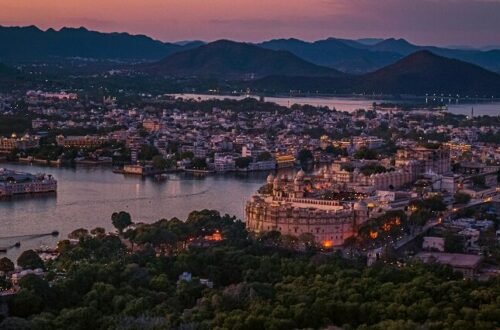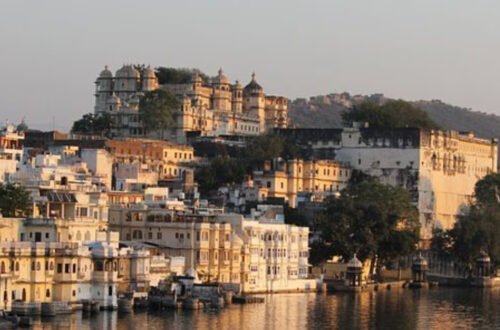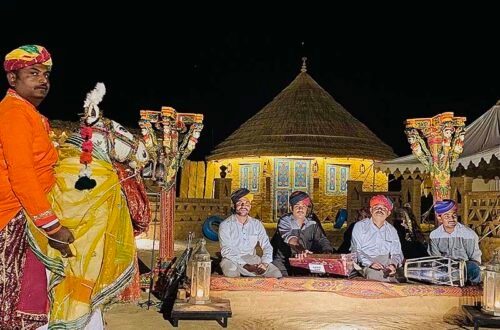Udaipur, often hailed as the “Venice of the East,” is a destination that fascinates global travelers with its elegant lakes, historical grandeur, and living cultural traditions. This piece explores two of its most iconic landmarks—Lake Pichola and City Palace—from the perspective of international travelers who seek more than just a sightseeing experience. Instead, they search for meaning, context, and authenticity that connects the modern world with a city shaped by centuries of Rajputana history.
The Global Allure of Lake Pichola
Lake Pichola is not merely a body of water; it’s a lens through which the foreign traveler views the spirit of Udaipur. Created in 1362 AD, the lake has been the lifeblood of the city for centuries. International visitors often find themselves drawn to its stillness—not just for its beauty, but for the stories embedded in its surroundings.
What makes Lake Pichola so compelling is how naturally it integrates with Udaipur’s cultural and architectural heritage. The Jag Mandir and Jag Niwas (now the Taj Lake Palace) float upon its surface like odes to historical resilience. Many global tourists, especially from Europe and North America, find this landscape reminiscent of classical water cities like Venice or Bruges, but with distinctly Indian textures and rituals.
The lake also reflects Udaipur’s rhythm—morning prayers on the ghats, evening boat rides, and quiet moments of reflection. For those coming from fast-paced urban centers, this rhythm often serves as a reset button, offering a rare window into sustainable living practices shaped by nature and history.
Interpreting the City Palace Through a Foreign Lens
Just a short walk from Lake Pichola stands the magnificent City Palace, a towering complex built over nearly 400 years. Its vast courtyards, intricately designed balconies, and fusion of Rajasthani, Mughal, and European architecture reveal much about Udaipur’s ability to evolve and accommodate influence without losing identity.
To the international eye, City Palace is not just an architectural feat—it’s a living museum of adaptation. Visitors from countries with well-preserved heritage institutions often compare it to European castles or Asian imperial complexes. But what sets it apart is its function as both a historical monument and a living space, with parts of the palace still occupied by the Mewar royal family.
Art history enthusiasts from abroad frequently note the murals and glass mosaics as rare representations of regional storytelling. Some even liken them to Gothic stained glass windows or Japanese scroll paintings, underscoring Udaipur’s contribution to global visual culture.
Cultural Continuity in a Globalized Setting
One of the most fascinating aspects of Udaipur’s global appeal lies in its ability to preserve cultural continuity amidst tourism. Events such as traditional puppet shows, folk music performances on the lakefront, and miniature painting workshops are not staged reproductions—they are genuine continuations of living traditions.
For travelers from countries where industrialization has distanced society from traditional arts, these experiences hold unique value. The human connection to craft and storytelling in Udaipur often evokes a sense of nostalgia for what many feel they’ve lost in their own cultures.
Ethnographers and sociologists visiting from abroad frequently highlight how the city balances local identity with international engagement. Udaipur, they note, is not frozen in the past—it’s a contemporary city grounded in its history.
Global Travel Narratives and Udaipur’s Place Within
Udaipur regularly appears in international travel literature, photography exhibitions, and documentary films. This isn’t coincidental. Its aesthetic, environmental balance, and layered history appeal to a wide spectrum of travelers—those interested in architecture, anthropology, sustainable tourism, and spiritual journeys.
From backpackers documenting their experiences on Lake Pichola to professional researchers exploring the lineage of Mewar rulers, Udaipur finds a place in a variety of global narratives. Travelers often compare the feeling of walking through the courtyards of City Palace to traversing ancient streets in Florence or Kyoto—each with its own tale, but united in emotional resonance.
This global lens doesn’t dilute Udaipur’s uniqueness; instead, it highlights how local contexts can achieve universal relevance. A European academic studying cultural heritage may find the same sense of wonder as a Southeast Asian artist sketching the palace from across the lake.
The Evolving Role of Accommodation in Cultural Immersion
A significant shift in global travel trends is the move toward experiential stays. Foreign visitors are increasingly choosing accommodations that help them engage with the culture, rather than isolate them from it.
Staying at places that are contextually rooted in local history—offering architectural authenticity, local cuisine, and access to traditional events—adds layers to their understanding. It’s here that the Best Luxury Hotel in Udaipur serves as more than just lodging. It becomes a setting where history, comfort, and cultural exposure intersect for the modern global traveler.
Closing Thoughts: Udaipur in the Global Imagination
To see Udaipur through a global lens is to appreciate the city not only for its visual beauty but also for its symbolic and historical resonance. Lake Pichola mirrors the timeless elegance of water-bound cities, while City Palace serves as a narrative structure etched with stories from generations past.
For foreign visitors, these sites are more than attractions—they are immersive experiences that expand their worldview and deepen their cultural understanding. Udaipur’s relevance in global travel circles lies not in how different it is from other destinations, but in how gracefully it bridges the gap between local and global, tradition and modernity, memory and movement.





